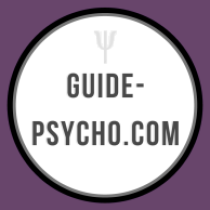BODY CONSCIOUSNESS AND AFFECTS / A KIND OF PSYCHOMOTOR THEORY
BODY CONSCIOUSNESS AND AFFECTS / A KIND OF PSYCHOMOTOR THEORY
Eric W. PIREYRE
Psychomotor therapist
T. Roussel Hospital
1 rue P Mithouard
78360 Montesson - France
Abstract
Body consciousness is a specific psychomotor tool. It can occur with or without the immediate implication of the neurosensorial system, with or without the therapist's verbal intervention, and always with attention focalisation. Then emotions appear. Pictures or memories may occur finally. Psychomotor therapist must listen and, eventually, answer to the patient's verbalisations. He has to choose the right way to help his patient's body consciousness. Nevrotic, psychotic and autistic patients' cases, and baby's are discussed. This work is aimed to build a definition of body consciousness and to make it one of the theoritical bases of psychomotricity.
Key-words
Psychomotor semiology; Emotions; Neurosensoriality; relaxation; Psychopathology
Introduction
Psychomotor therapist is a young profession. French certification dated 1974, competences decree dated 1988 and status of medical ancillary staff dated 1994. Although the psychomotricity roots are much older, theoretical bases are still to be sharpened. Between neurology and psychology, between the physical and the mental fact, the psychomotor therapist, in his daily practice, deals with theories that may be conflicting or complementary, but are rarely resulting from psychomotricity itself. And yet formal or non-formal exchanges between professionals bring forward often consensual issues. Concepts of tone, tonic dialogue, emotions, entirety, neurosensory system are usually agreed. The body is always central in those exchanges. Body consciousness is an efficient therapeutic tool used by many psychomotor therapists. This work is aimed to better understand it and to show it could be considered as one of the essential theoretical base of psychomotricity.
Place of body consciousness in the psychomotor practice
Here is a setting proposed to a patient by the therapist during a relaxation session : “You are going to try to feel the presence of the different parts of your body. It might happen that it is difficult for you to feel some areas of your body. I propose you to move slightly those parts or to touch them with your hands, your feet or in any way you may need. You will try to feel after if it helps you to better feel the presence of your body in those areas”. Different patients describe difficulties to feel some parts of their body : “I know immediately which part I was going to touch”. It is often but not always a part of legs, shoulders, belly, feet or neck. The variety of those areas show the interindividual differences and the importance of the background of the person. It is uniqueness. The effect of a such of relaxation session is significant. Different patient talk spontaneously with their own words about feeling of entirety. “ I feel complete”. “I feel entirety”. Secondly verbal communication might be associated with emotions. “It is the first time I could feel my legs”. “I think I am going to sleep well”. “It makes me feel good”. “When I noticed I could not feel my index fingers, it makes me feel bad”. “It is strange”. Lastly if adequate time is given to the patient or if he has sufficient mental ability, pictures, memories, or ideas may occur. “When I could feel my neck, it makes me think when I was a child, my little brother fell out of the top bunk over me. There was a concern about my neck, and I had to wear a neck brace for a while”.
Pointing out the patient attention to his own body and make the body “exists” for example through the words of the therapist or sensory stimulation, may have often a simple body effect, followed by an arousal of emotions, and then eventually of pictures. Those pictures related to emotions may occur only after them. Same thing is observed if it is proposed to the patient to think about tensions in the body. But in this case the direct and active help of the psychomotor therapist may be needed in different ways. Then the tonic dialogue is important. What is the mechanism of the body consciousness? What behind it? Some hypothetic answers could be found if we consider the sensory system.
Sensory neurophysiology : the basic machinery
Students in psychomotricity course are lead to think about the different concepts of psychomotricity. Early in the first year students have a remarkable intuitive knowledge of proprioception. But they could not answer to the question “what is physically behind proprioception”1. They have no idea that an extremely subtle and accurate neurosensory system may exist. It is unlikely that the general population will know it also.
However the knowledge of neurophysiology help us greatly to understand the mechanism of body consciousness. Evidence-based classification indicate very specific and precisely defined sensory systems. Richard and Orsal (2001) identify two systems classes : somatic sensitivity (or somesthesis) and visceral sensitivity (or interoception).
Somatic sensitivity
|
|
Receptors localization |
Information type |
|
Superficial sensitivity (exteroception) |
Skin and eye |
Pressure, touch, vibration, temperature, pain, taste, hearing, vision, olfaction |
|
Deep sensitivity (proprioception) |
Muscles, tendons and joints |
Body position (joints angles), kinesthesis (speed, amplitude, movements direction), force
|
1 we can notice that the absence of this idea does not help students in early courses to conceptualize the relevance in learning anatomy and neurophysiology. Practical courses led by a psychomotor therapist allow to raise this consciouness.


